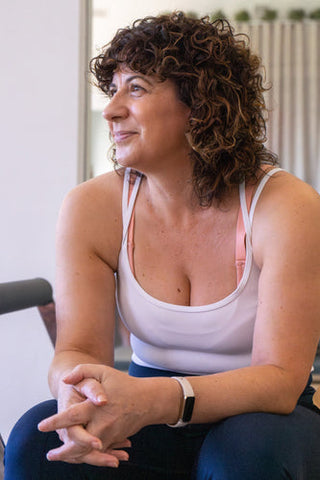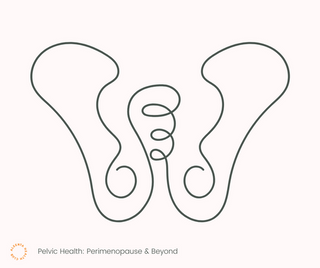When you hear ‘barre’ as someone totally new to it, what do you think? Graceful ballerinas prancing around the studio making the workout look effortless and easy… Not something for a regular, human person, right? WRONG!
Whilst it may be named after the iconic apparatus used in ballet, barre is not an art form, nor a dance class; it is first and foremost a workout! You will be surprised by the amount of classic fitness incorporated into the classes, from Pilates and Yoga, to weight training exercises popular at the gym. Barre can do it all! However, there are many common myths that say otherwise, stopping many aspiring new #BarreBosses from taking their first class. So, let’s debunk them:
1. Barre is only for dancers
Barre workouts are merely inspired by ballet movements; you don't have to be a ballerina to enjoy the benefits of barre! Barre classes are suitable for people of all fitness levels and backgrounds and the music is used as a tool to keep the pace of exercises, not to show off your grace and artistry. Why is working to the beat important? Well, studies have shown that tempo matters, especially in relation to the type of exercise being executed, which is something we delve into further in our blog about music and exercise.
Don’t worry, even if rhythm isn’t your strongest suit, you will find you get the hang of working to the beat after just a few classes.
2. You need to be flexible to do barre
Flexibility can be an asset in barre classes, but it is not a requirement, as the class focuses primarily on strengthening muscles, not stretching them. Stretches are incorporated at the start and end of class, and sometimes between exercises, as a way to provide rest and relief to your muscles. It is not necessary that you stretch at your full range of motion, just to where it feels good so you can relieve burn and continue working! Additionally, many of the movements in barre classes can be modified to suit individual flexibility levels, and consistent practice can lead to improved flexibility over time.
3. Barre only works small muscles, which are harder to access
While barre workouts do incorporate small, isolated movements, they also work larger muscle groups, such as the glutes, quads, and hamstrings. Our classes provide a full-body workout that can improve overall strength and muscle tone, with cardio elements to improve endurance and stamina too.
Your instructor will also give cues to help you feel the burn in the right spot, so if you are worried about accessing muscles you haven’t worked before, don’t sweat it! We are here for you every step of the way, with classes and instruction designed to support those brand new to barre and fitness.
4. Barre is only suitable for young, mobile people.
This is one we hear a lot, especially with the rise of social media and the influx of posts particularly of young women in their gorg, matching activewear, sweating it out at the barre. While these clients are loved and welcome at our studios, barre is beneficial for people from all walks of life, whether you are new to fitness, returning after a long break, searching for suitable workouts as you age, or wanting something that can accommodate injury, chronic illness or pregnancy. Barre can do it all!
How? Barre is a low-impact exercise, meaning movements are gentler on the body since they do not involve jumping or pounding on the joints. Unlike high-impact exercises like running or jumping, which can be hard on the knees and other joints, barre exercises focus on building strength and endurance through small, precise movements that engage and tone muscles without the need for more impactful movement. Low-impact exercise can be particularly beneficial for individuals with joint pain or arthritis, as it can help improve cardiovascular health, muscular endurance, and bone density without exacerbating joint pain or inflammation. It is also an excellent way for older adults to improve their balance, strength, and flexibility.

Barre can also be an effective way to supplement high-impact activities such as HIIT training and prevent overuse injuries. For individuals with pre-existing injuries, low-impact exercise can provide a safe way to stay active and maintain fitness levels while allowing the body to heal. Low-impact exercises like barre can help reduce stress on injured joints or muscles and may even help with the rehabilitation process. Similarly, during pregnancy, barre can help maintain fitness levels and provide a safe way to exercise. However, modifications may be necessary to accommodate injuries and/or the changes in the body during pregnancy (you can find more information about exercise during pregnancy in this blog).
Our instructors are well-educated in working with such clients, so do not hesitate to let us know if you have concerns about attending class. Know that we have modifications readily-available, and it is more than okay to take breaks during class. Always consult with your doctor or Physio before attending, to know if barre is the right option for you.

Overall, while barre classes can be challenging, they are also adaptable to a wide range of fitness levels and can be modified to suit individual needs and goals. With consistent practice and dedication, anyone can improve their strength, flexibility, and endurance through barre workouts. Now that these myths have been #busted, are you ready to dive into your first class?
Try our 7-day intro offer, exclusively for new clients.
Find FREE barre classes on the Aleenta Health Club YouTube channel.





